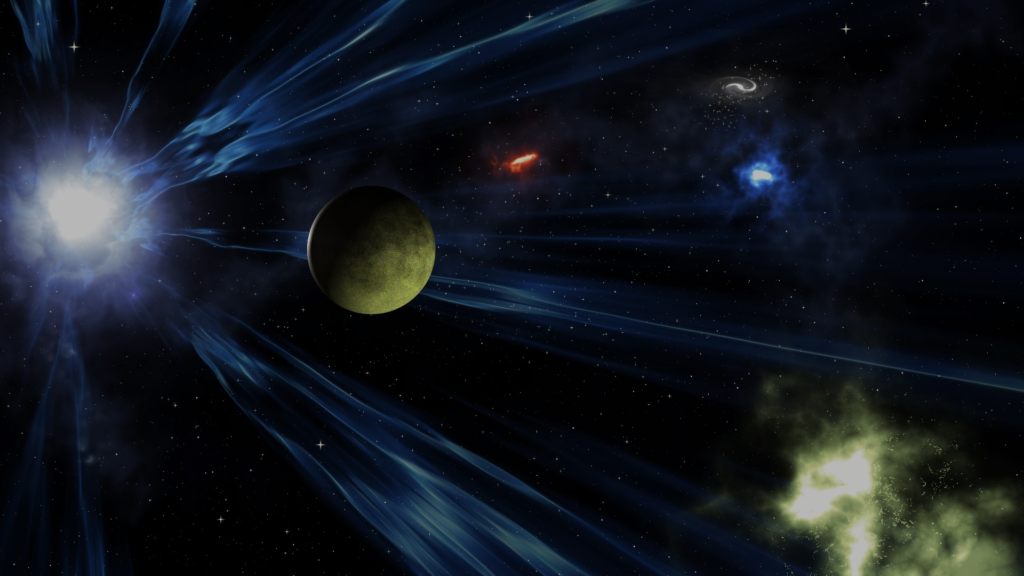## A Journey Through the Milky Way Galaxy: Its Structure and Wonders
Have you ever looked up at the night sky and felt a sense of awe, wondering about the vastness of space? We all share a cosmic address: the Milky Way Galaxy, a swirling island of stars, gas, and dust that’s home to our solar system. But what exactly *is* the Milky Way, and what incredible secrets does it hold? Let’s embark on a journey to explore this magnificent celestial city!
### 1. A Galactic Spiral: Unveiling the Milky Way’s Structure
Imagine a giant, spinning pinwheel – that’s a pretty good analogy for the Milky Way. It’s a spiral galaxy, meaning its stars and gas are arranged in a spiral pattern extending from a central bulge. This bulge, a dense collection of older stars, is surrounded by a flat, rotating disk containing younger stars, gas clouds (nebulae), and dust. Our Sun resides within one of the spiral arms, about two-thirds of the way out from the galactic center.
Did you know? The Milky Way is about 100,000 light-years in diameter! That means if you could travel at the speed of light, it would take you 100,000 years to cross it. To put that in perspective, a light-year is the distance light travels in one year – approximately 9.5 trillion kilometers.
### 2. Stellar Nurseries and Cosmic Recycling: The Birth and Death of Stars
The spiral arms of the Milky Way are not just pretty; they are cosmic factories! These regions are rich in gas and dust, the raw materials for star formation. Giant molecular clouds within the arms collapse under their own gravity, forming dense cores that eventually ignite into blazing stars. Different sized clouds create different sized stars; massive clouds create supergiants, while smaller ones create stars like our Sun.
When massive stars die in spectacular supernova explosions, they scatter heavy elements back into space, enriching the interstellar medium. This “cosmic recycling” is crucial because it provides the building blocks for future generations of stars and planets, including the elements that make up our bodies!
### 3. A Galactic Center Mystery: Sagittarius A*
At the heart of the Milky Way lies Sagittarius A*, a supermassive black hole. It’s millions of times more massive than our Sun and exerts an enormous gravitational pull on everything around it. Astronomers observe stars orbiting Sagittarius A* at incredibly high speeds, providing strong evidence for its existence and immense mass.
While black holes are inherently mysterious, studying Sagittarius A* helps us understand the role of supermassive black holes in the evolution of galaxies. It’s like the galaxy’s engine room, influencing the dynamics and structure of the entire Milky Way.
### 4. Beyond Our Neighborhood: The Milky Way’s Galactic Neighbors
The Milky Way isn’t alone! It’s part of a larger group of galaxies called the Local Group. Our closest major galactic neighbor is the Andromeda Galaxy, a spiral galaxy similar to our own, currently on a collision course with the Milky Way. Billions of years from now, the two galaxies will merge, forming an even larger elliptical galaxy.
This ongoing interaction between galaxies highlights the dynamic nature of the universe and the constant evolution of galactic structures.
### 5. Exploring the Milky Way: Tools and Future Discoveries
Observing the Milky Way can be a thrilling experience, even with the naked eye. On a clear, dark night, you can see the hazy band of light stretching across the sky – the combined light of billions of stars! Binoculars or telescopes will reveal even more detail, allowing you to spot star clusters and nebulae.
Future advancements in telescopes and space missions will undoubtedly unveil even more secrets of our galaxy. We’re only beginning to understand the complexity and beauty of the Milky Way, and the journey of discovery continues!
**In conclusion,** the Milky Way Galaxy is a breathtakingly vast and dynamic structure, full of wonders waiting to be discovered. From the birth and death of stars to the mysterious supermassive black hole at its center, this cosmic city offers a glimpse into the grandeur and complexity of the universe. So, the next time you look up at the night sky, remember that you’re a tiny part of something truly magnificent. Share your thoughts on the Milky Way in the comments below, and let’s continue exploring the cosmos together!


